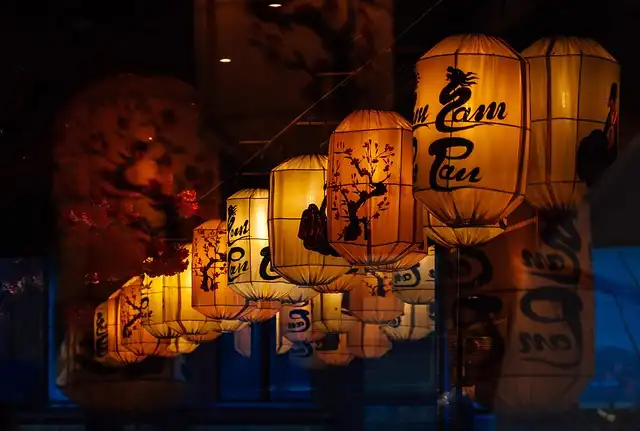Jade Rabbit: Ng’s Fast-Casual Chinese American Dining

Bryant Ng, formerly of Cassia, launches Jade Rabbit, a fast-casual Chinese American restaurant. Offering dishes like orange chicken, it emphasizes affordability and a streamlined operation inspired by his family's history.
Ng also uses traditional Chinese steamed fish making use of salmon, a component seldom seen on quick-service menus and a factor of satisfaction for the cook. In each situation, the meals show Ng’s take on familiar food.
From Fine Dining to Fast-Casual: Ng’s New Venture
“We desire this to be a location where normal individuals can come,” claims Ng, that for 10 years provided a premium Southeast Oriental menu at Cassia, up until it closed last February. The regular-sized combination at Jade Rabbit begins at $12.90, much less than the $16 to $31 price array for an appetiser at Cassia, where the check average was more than $70.
The Jade Rabbit is a mythical character, Ng tells Eater, “that lives on the moon with the Moon Goddess, and has a mortar and pestle to create the elixir of life.”
The Mythical Jade Rabbit and Restaurant Concept
The restaurant constructs its plates on a collection of options. Initially, two base products (or a double offering of one) from a list that consists of deep-fried rice, chow mein, cold noodles, residence salad, and brown or white rice. Next off, two vegetables; Ng’s favorites include a charred mushroom and broccoli combination, and chunks of “slapped cucumbers,” which are whacked with the side of a large blade to develop an irregular appearance that holds onto a sauce. Last, a protein, though vegans and vegetarians can choose an additional helping of veggies or a Hong Kong-style vegan curry.
Menu Highlights: Customizable Plates
After even more than 20 years in great dining, from Daniel in New York City and Pizzeria Mozza in Los Angeles to his own Spice Table in Little Tokyo, Ng and his partner and business companion, Kim Luu-Ng, have a brand-new goal. “It’s method a lot more democratic,” claims Ng.
Democratizing Dining: A New Goal
Ng is careful of getting in advance of himself. The job, today, is to serve the food that matters to him, to Luu-Ng, and to as numerous people as possible. “We’re going to treat this as a one-off and put our hearts and souls into it,” states Ng.
Ng loves Jade Rabbit’s orange chicken, his homage to the Panda Express variation he appreciated when he was a UCLA pupil– and still orders when he and Luu-Ng fly out of the Tom Bradley incurable at Los Angeles International Airport Terminal. “It’s a guilty satisfaction of mine,” he states. “The initial few bites were always the most effective: batter coated in a tasty sweet-sticky sauce complied with by a bite of hen inside. The sweetness can wear on you after a couple of bites, so I would certainly always add some Sriracha to change up the taste profile with some zesty warm and more level of acidity.” To prevent the too-sweet trouble, he’s added mango to his variation for flavor.
But the functional side is as various from Cassia– and from his household’s restaurants– as the food and prices are. Hourly staff members make the very same wage whether they remain in the cooking area or out front, and triumphant methods respond to staff, due to the fact that there’s no table solution. Tips will be pooled, “super simple, one pot split equally,” says Ng, though he frets a little bit about the post-pandemic trend of not tipping at fast-casual places.
Operational Differences: Wages and Tipping
Cassia became part of the Rustic Canyon team, yet the concept for this independent task had been simmering before the Cassia collaboration developed. To Ng, Jade Bunny needed to be independent to succeed: Rustic Canyon has a company-wide dedication to using organic active ingredients as much as feasible, and to hit his target rates Ng needs to depend, rather, on high-grade distributors who could not be certified. He and Luu-Ng also can’t maintain a friendliness team’s framework for the brand-new task. While Rustic Canyon supplies back-end assistance for its restaurants, the couple will rely on third-party clothing for their smaller-scale bookkeeping, HUMAN RESOURCES, and communications.
Independence and Ingredients Sourcing
Bryant Ng, a companion in the now-closed Santa Monica dining establishment Cassia, is about to do a 180 with his brand-new restaurant, Jade Bunny, a Chinese American place where diners will certainly find compostable takeout containers rather than excellent plates and orange hen rather than Cassia’s namesake lobster. The brand-new restaurant, which opens up in very early September after a year of frustrating hold-ups, is his very first foray right into fast-casual eating– and, he really hopes, not the last.
Jade Rabbit, on the other hand, is a “structured procedure,” based in fantastic part on Ng’s youth memories. He is a third-generation restaurateur; his grandparents owned a restaurant called Bali Hai in Culver City in the 1950s, and he spent a lot of his childhood at his parents’ restaurant, Wok Way, in Northridge. To Ng and Luu-Ng, Jade Rabbit is a modern mom-and-pop, similar to its predecessors.
That’s for now– however Jade Rabbit was developed with an eye toward development. There are 50 seats complete for people who desire to dine in, 40 indoors and 10 on the parkway, yet Ng and Luu-Ng expect that hefty takeout and shipment web traffic will construct quantity. “We’re set up to prepare for the following action, making sure we have the framework,” says Luu-Ng, who is additionally an immigration legal representative.
Future Expansion and Location Details
The 3400-square-foot space, simply eastern of the Divine superintendence St. John’s healthcare facility in Santa Monica, looks like absolutely nothing even a snack bar, if a snack bar had a feeling of style, humor, and served preferable food. Clients line up to put their orders at a lengthy counter alongside a cartoon mural, under the benevolent look of a huge neon bunny. The Jade Rabbit is a mythological personality, Ng informs Eater, “that lives on the moon with the Moon Siren, and has a mortar and pestle to produce the elixir of life.”
Ng enjoys Jade Bunny’s orange hen, his homage to the Panda Express variation he delighted in when he was a UCLA pupil– and still orders when he and Luu-Ng fly out of the Tom Bradley terminal at Los Angeles International Airport. Jade Bunny, in comparison, is a “streamlined operation,” based in excellent component on Ng’s childhood memories. To Ng and Luu-Ng, Jade Rabbit is a contemporary mom-and-pop, simply like its predecessors.
Like any type of survival-oriented fast-casual place, nowadays, Jade Rabbit has another successful item on its menu– goods, including what Luu-Ng calls “very ironic” T-shirts and baseball caps with a one-word branding motto: “Jaded.”.
To Ng, Jade Rabbit had to be independent to prosper: Traditional Canyon has a company-wide commitment to making use of natural ingredients as a lot as possible, and to hit his target pricing Ng has to rely, rather, on high-quality providers who could not be accredited.
1 barbecue restaurants Quarters2 Bryant Ng
3 Chinese American
4 fast-casual dining
5 Jade Rabbit
6 orange chicken
« Lotteria: Korean Fast Food Expands to CaliforniaLA Weekend: Food & Sports Highlights – Khachapuri, Mezcal & Women’s Sports! »
